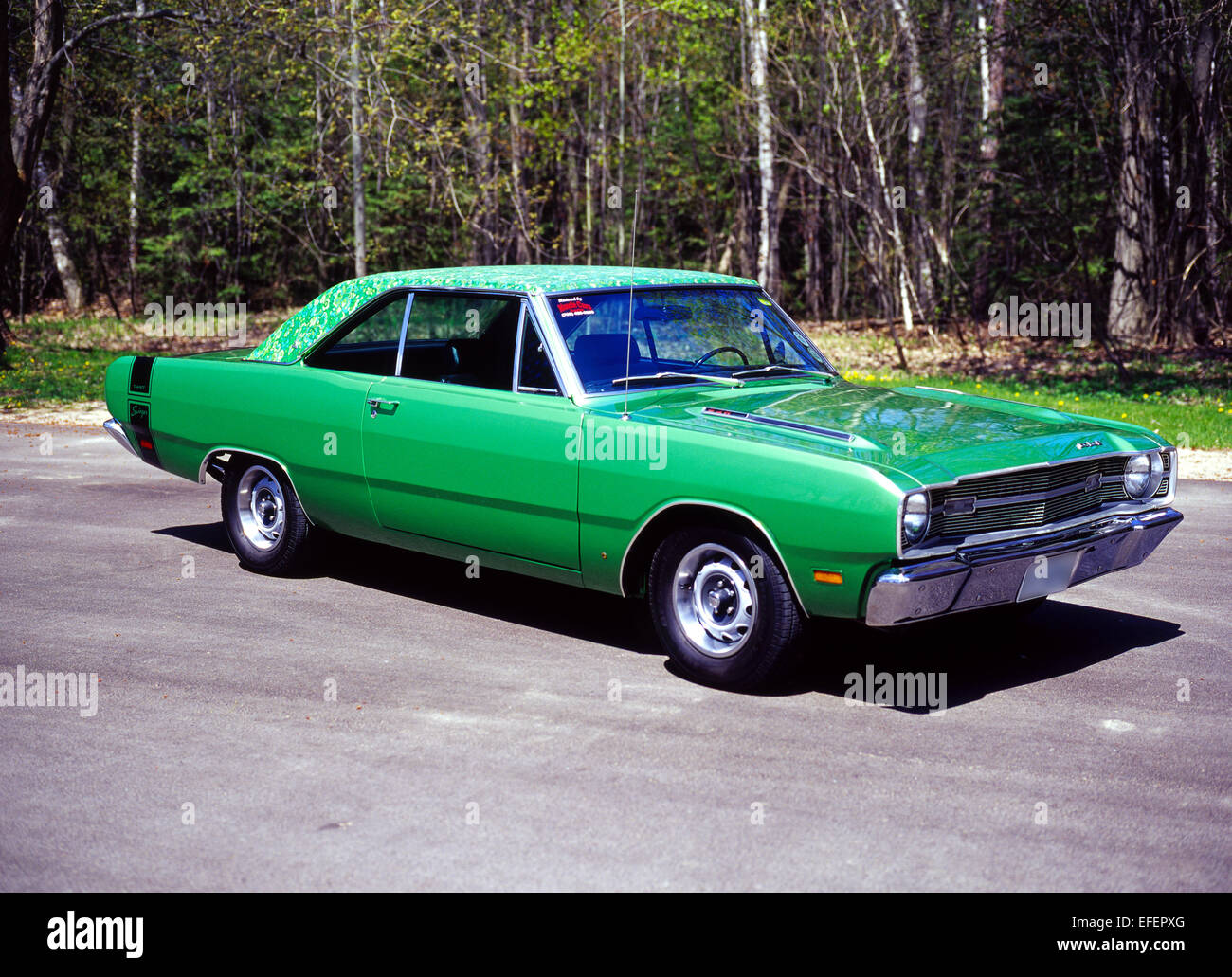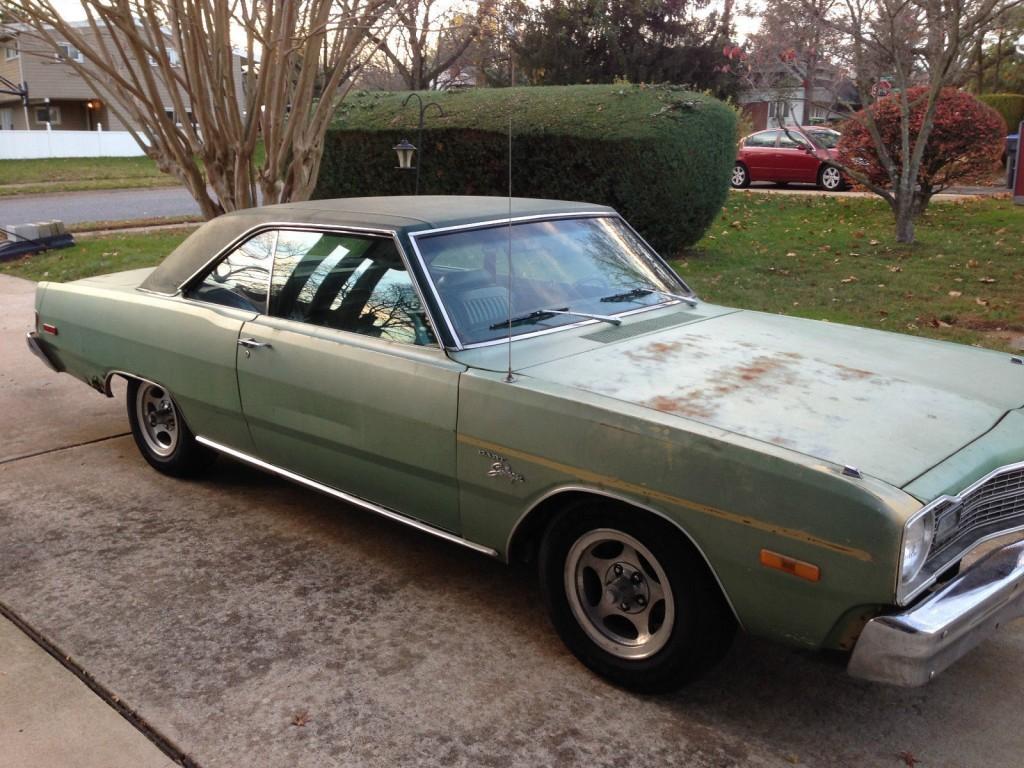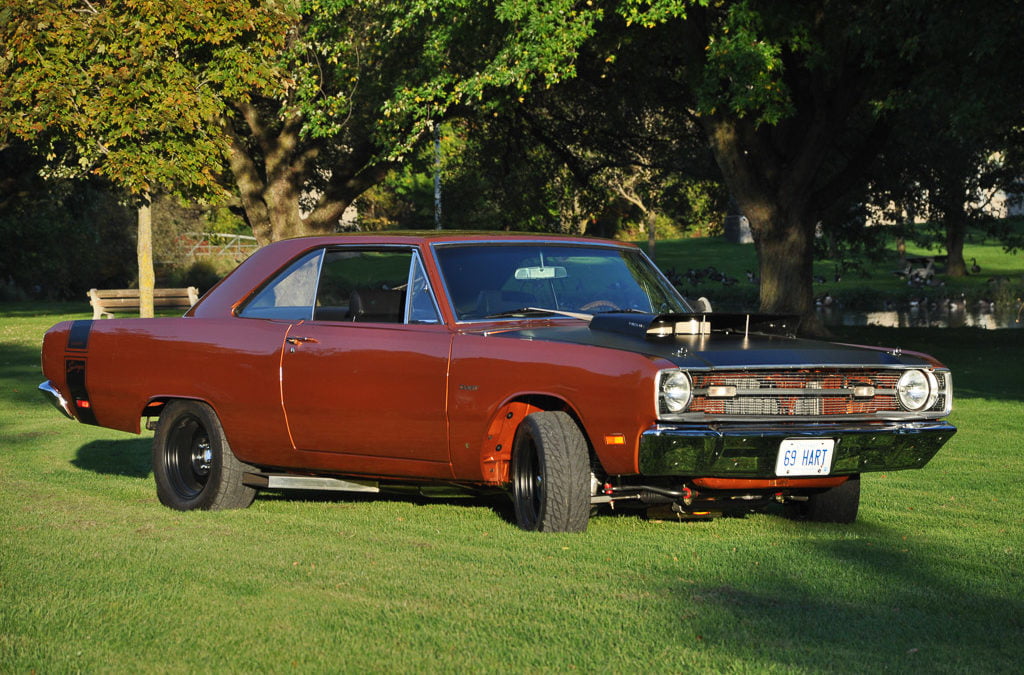
Grand Spaulding Dodge, a noted Dodge dealer in Chicago owned by legendary builder Norman “Mr. Using fiberglass fenders and hood, belt straps for window cranks, and A100 seats for decreased weight, this car and its sister car, the Hurst Hemi Barracuda, would dominate Super Stock for decades to come in fact, it still does today.
#Dodge dart swinger install
Dodge would ship Dart body shells to Hurst and they would install a ram-inducted 426 cubic in. In 1968, Dodge released one of the most feared drag cars ever: the 1968 Hurst Hemi Dart. The light weight and high power ratio of the 340-equipped cars, together with the excellent handling for which the Dart had become renowned, made them a favorite of drag racers. (6.3 L) big-block was optional (not available in 1967). The Dart GTS came standard with the 340 cubic in. available only in the hottest Dart, the performance-oriented GTS model. at the same time the 4-barrel carbureted 273 235 bhp was replaced on the options list by the 275 bhp 4-barrel carbureted 340 cubic in. The 318 was rated at 230 bhp (170 kW) versus the 2-barrel carbureted 273’s 180 bhp (130 kW). The 2bbl 273 cubic in.(4.5 L) small-block V8 was replaced on the option list in 1968 by a 318 cubic in. the 4.125″ stroke of the 225 crank) and connecting rods (7.006″ long vs. The smaller displacement was achieved with a new crankshaft (3.64″ stroke vs. This new base engine was also less costly to make, for unlike the previous 170 engine, the 198 used the same block as the 225. For North American domestic-market vehicles, the base 170 engine was replaced for 1970 with a stronger new 198 cubic in. Slant-6 engine remained standard equipment, though its power rating rose from 101 bhp (75 kW) to 115 bhp (86 kW) for 1967, owing to the installation of the 225 engine’s larger carburetor and the revised camshaft the bigger engine had received in 1965. The 2-door sedan was dropped at the end of 1968 and replaced with the Swinger 2-door hardtop for 1969. In late 1967, the GTS model debuted but was built in limited quantities due to its lateness in the model year the 1968 GTS would be, arguably, improved by fitting the new high-outout 340 cubic in.

The 270 and GT versions carried on unchanged for the most part. The base 170 model was now badged simply as Dart. The only body styles were the 2 and 4 door sedans, the hardtop, and the convertible. With the new design, changes were made to the Dart line-up, beginning with the elimination of its station wagons and the base model’s “170” designation. This same front end treatment, with minor cosmetic changes to the grille and the park/turn lamps relocated to the front bumper, was also used by Chrysler Australia for their 1967 VE-model Valiant. Park/turn lamps were set into the grille, in the corners formed by the transition area between the recessed and forward sections. The single headlamps were placed forward of the recessed center section, defining the front plane. Up front, there was a new dual-plane front end contour: the center section of the grille, bumper and leading edge of the hood were recessed from the front plane of the car.

Curved side glass was used for the first time on a Chrysler compact. This created a unique appearance at the rear of the greenhouse, but tended to collect snow and created thick C-pillars that looked formal but created blindspots for drivers. The restyled Dart for 1967 featured a rear window (backlight) with compound inverse curves. The Dart would keep this basic form, with a few facelifts consisting of revised front and rear end styling and interior trim, until the end of A-body production in 1976 (US/Canada/Mexico) and 1983 (South America).

In addition to new styling, the cars received revised steering systems, wider front track (and wider spaced rails) and redesigned K-members capable of accepting physically larger engines. The Dart and its sister model, the Plymouth Valiant, were significantly redesigned for the 1967 model year. Past Collection – 1969 Dodge Dart Swinger


 0 kommentar(er)
0 kommentar(er)
